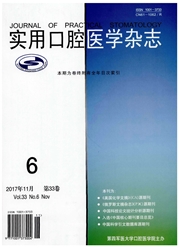

 中文摘要:
中文摘要:
目的:运用活体小动物显微CT技术分析氟中毒小鼠与正常小鼠股骨肝骺端骨质特征三维微观结构的区别,以期为氟中毒小动物研究提供一种新方法。方法:20只3周龄C57BL/6J小鼠,对照组小鼠(n=10)用去离子水自由饮用;实验组(n=10)以100mg/LNaF溶液自由饮用。2组小鼠分别在喂养2个月和6个月时进行麻醉活体扫描其股骨肝骺端,利用显微CT(MicroCT)影像分析骨质特征。结果:氟中毒小鼠的骨质特征为骨密度降低,骨量丢失,骨小梁结构发生了改变,骨强度下降,表现为骨质疏松样改变。结论:活体小动物显微CT技术是研究氟中毒小动物的一种有效方法。
 英文摘要:
英文摘要:
Objective: To observe the morphological characteristics of femur in a mouse fluorosis model studied by micro- computed tomography (micro-CT). Methods: Twenty 3-week-old C57BL/6J mice were randomly allocated into two groups:the control mice( n = 10) were feed with ddH20;the treated mice(n = 10)were feed with 100 mg/L NaF. The morphological characteristics of femur of the mice was studied by micro-CT 2 and 6 months after treatment. Results: Osteoporosis phenotype features, including decrease of bone mineral density, bone loss, bone trabecular structure change and bone strength degradation were observed in Fluorosis mice. Conclusion: Micro-CT is an effective method for fluorosis animal study.
 同期刊论文项目
同期刊论文项目
 同项目期刊论文
同项目期刊论文
 Cultural differences define diagnosis and genomic medicine practice: implications for undiagnosed di
Cultural differences define diagnosis and genomic medicine practice: implications for undiagnosed di 期刊信息
期刊信息
